The US Army Rangers are one of the most elite special operations forces on Earth. Their history predates the Revolutionary War. In the mid-1700s, Capt. Benjamin Church and Maj. Robert Rogers both formed Ranger units to fight during King Philip’s War and the French and Indian War. Rogers wrote the 19 standing orders that are still in use today. Today, the Army Ranger School is one of the most sought-after training opportunities in the military. The path from trainee to Ranger is long and hard.
US Army Ranger School – Forging Warriors
Before you step foot in the course, soldiers need to complete Army Ranger RAP, or Ranger Assessment and Selection Program (RASP) week, which is the rigorous, week-long initial phase of U.S. Army Ranger School, designed to assess a soldier’s physical and mental toughness before they can advance to the next phases of the course. It includes a physical fitness test with strict standards, a combat water survival assessment, land navigation, a challenging obstacle course, and other basic soldier skills assessments. Successful completion of RAP is a prerequisite for entering Ranger School.
The Ranger Course is the Army’s toughest and premier small-unit tactics and leadership course. The Ranger Course is a mentally and physically challenging course that develops functional skills directly related to units whose mission is to engage the enemy in close combat and direct fire battle. For 62 days, Ranger students train to the point of exhaustion, pushing the limits of their minds and bodies.
Advertisement — Continue Reading Below
Three Phases
The course incorporates three phases (Darby, Mountain, and Swamp), which follow the crawl, walk, run training methodology. In the Darby phase, students are trained in squad operations and focus on ambush and reconnaissance missions, patrol base operations, and planning before moving on to platoon operations. In the Mountain phase, students develop their skills at the platoon level to refine and complete their training in the Swamp phase. After these three phases, Ranger Students are proficient in leading squad and platoon dismounted operations around the clock in all climates and terrain. Rangers are better trained, more capable, more resilient, and better prepared to serve and lead Soldiers in their next duty position.
Darby Phase
The Darby Phase of Ranger Course is designed to assess a Soldier’s physical stamina and mental toughness, as well as establish the tactical fundamentals required for the follow-on phases of Ranger Course. During this 21-day phase, Ranger Instructors (RIs) coach, teach, and mentor each student to sustain themselves, sustain their subordinates, maintain mission-essential equipment, and accomplish the mission under difficult field-training conditions. Although each soldier who volunteers for Ranger training arrives in top physical condition, only about 50% of Ranger students complete this first phase.
Advertisement — Continue Reading Below
The Darby Phase is conducted in two parts: the Ranger Assessment Phase, commonly referred to as “RAP week,” and the Patrolling Phase, commonly referred to as “Darby Phase.” Conducted at Camp Rogers on Fort Benning, RAP week begins with the Ranger Physical Assessment (RPA), which requires students to complete 49 push-ups, 59 sit-ups, a 5-mile run in 40:00, and six chin-ups. Following the RPA, students conduct the Combat Water Survival Assessment at Victory Pond.

Day Two
Day two begins at 0330 hours with the night-and-day land navigation test, followed by testing of common Soldier skills, such as weapons and communication equipment. It finishes with the Malvesti Confidence Course, which contains the infamous “worm pit.” Day three includes the land navigation retest for all of those who did not pass the initial test. The fourth and final day completes RAP week with a 12-mile foot march, during which each student carries an average load of 47 pounds.
Advertisement — Continue Reading Below
After RAP week, less than half the class will likely continue to the Darby phase. This phase begins with fast-paced instruction on troop-leading procedures, the principles of patrolling, demolitions, field craft, and basic battle drills, such as squad ambush and react-to-contact. On day six, students who are airborne-qualified will participate in a parachute jump onto the Fryar Drop Zone.
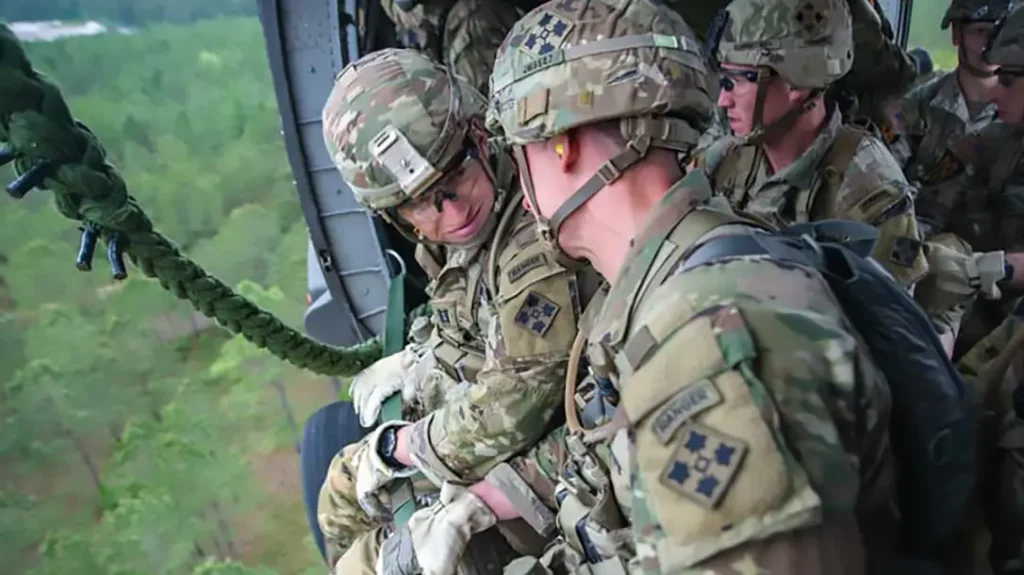
Get On The Bus
Upon completion of the parachute operation, all students board buses for Camp Darby on the eastern edge of Fort Benning. Before students begin the practical application of their instruction, they negotiate the Darby Queen Obstacle Course, which consists of 20 obstacles spread over 1 mile of hilly terrain. Students then conduct two days of cadre-led, non-graded squad-level patrols. After the non-graded patrols, students conduct three days of graded patrols, one day of cadre-assisted retraining, followed by three more days of graded patrols.
Advertisement — Continue Reading Below
To move forward to the Mountain Phase of Ranger Course, each student must demonstrate the ability to plan, prepare for, resource, and execute a combat patrol as a squad leader or team leader. Students must also receive positive peer evaluations and not accrue more than three negative spot reports. Those who are successful receive an eight-hour pass to refit their gear and then move to the mountains of North Georgia.
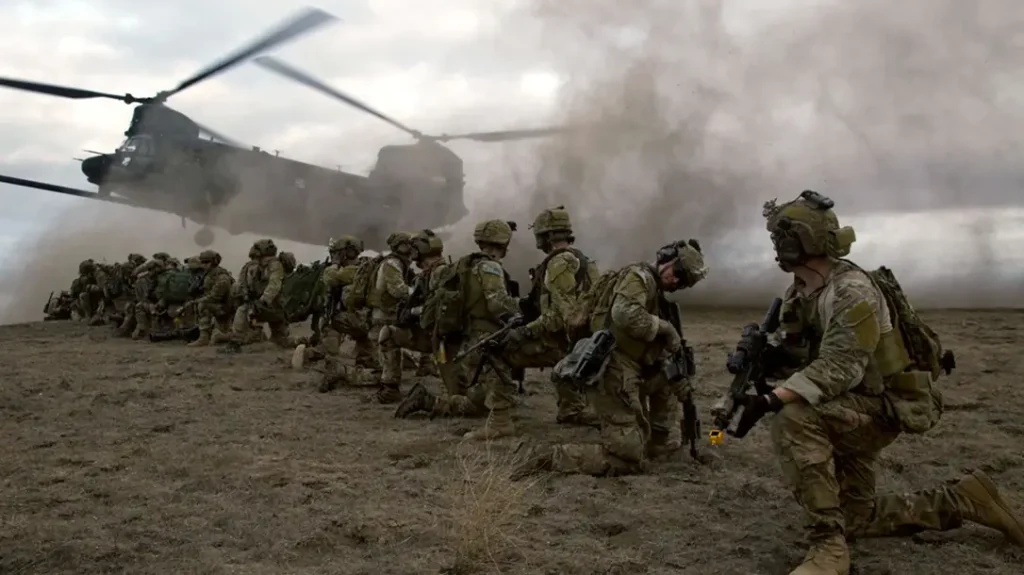
Mountain Phase
During the Mountain Phase at Camp Frank D. Merrill, students learn military mountaineering skills. They receive mobility training and tactics for platoon operations. Students practice continuous combat patrols in mountainous terrain. They focus on planning, preparation, and execution of patrol missions. Participants must sustain themselves and their team members. The challenging environment tests their physical and mental limits. They face rugged terrain, severe weather, and hunger. Emotional stress also plays a significant role in their training. This experience helps them assess their capabilities and those of their Ranger Buddies.
Advertisement — Continue Reading Below
Ranger students receive four days of training on military mountaineering. During the first two days at the Lower Mountaineering Area on Camp Merrill, students learn about knots, belays, anchor points, rope management, and the fundamentals of climbing and rappelling. Mountaineering training culminates with a two-day exercise at Yonah Mountain applying the skills learned during Lower Mountaineering. Students conduct one day of climbing and rappelling over exposed, high-angle terrain, culminating in a 200-foot night rappel using night-vision goggles. The second day, squads perform mobility training to move personnel, equipment, and simulated casualties through severely restrictive terrain using fixed ropes and hauling systems.
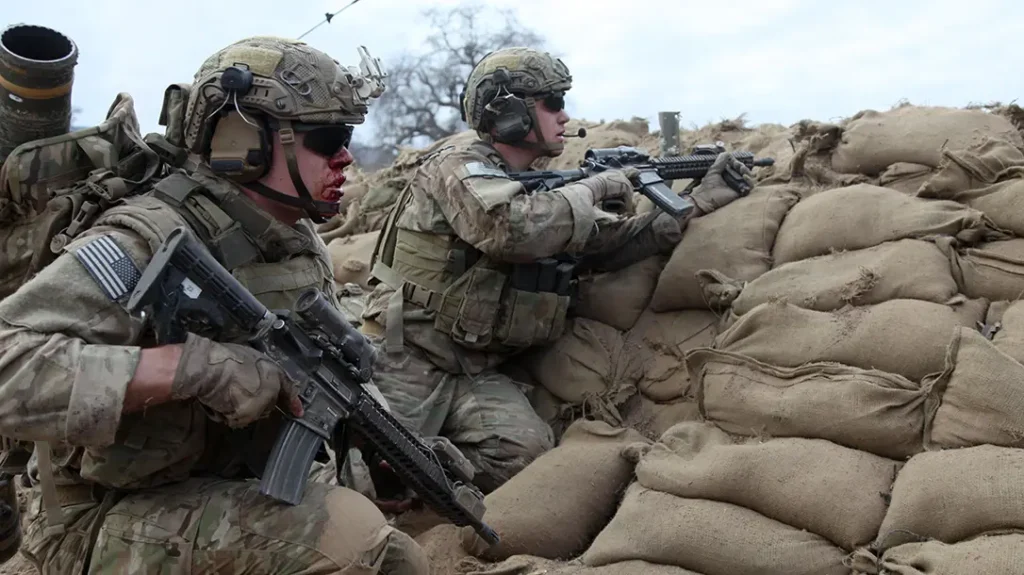
Combat Technique Training
After mountaineering, students train for four days in combat techniques. They attend classes and perform practical exercises. This includes movement to contact, patrol bases, troop leading procedures, operations orders (OPORDs), ambush missions, and raid missions. Next, students conduct ten days of combat patrols against a well-equipped hybrid threat. These patrols occur both day and night. Operations include Air Assault and cross-country movements in mountainous terrain. Platoon missions involve movements to contact, ambushes, and raids on communication sites. Students also perform river crossings and scale steep mountains. Their stamina and commitment are pushed to the limit. Students may be selected to lead tired and hungry peers on additional patrols. After Mountain Phase, they travel by bus or parachute into Florida’s coastal swamps for the final training phase.
Advertisement — Continue Reading Below
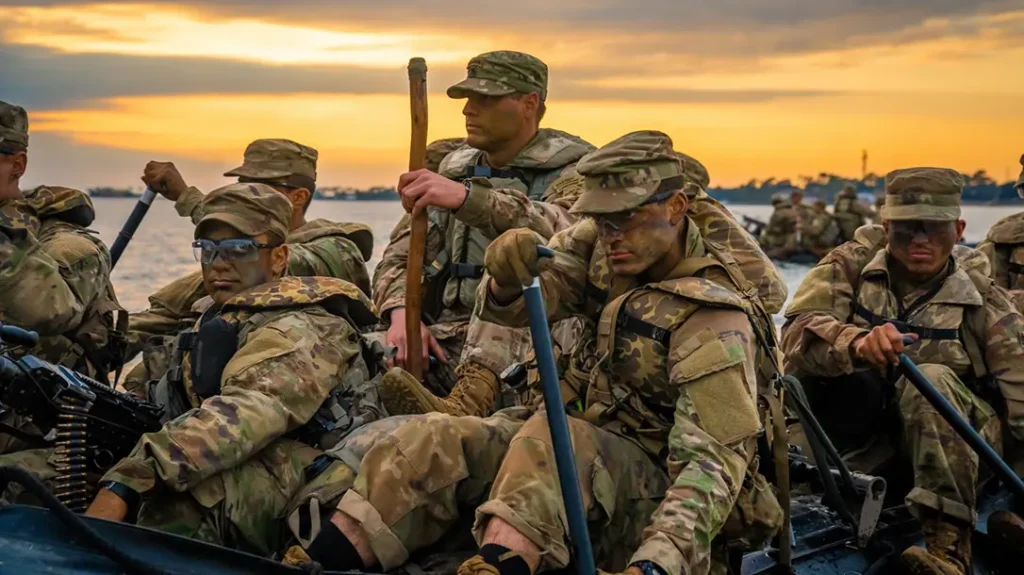
Swamp Phase
Camp Rudder is located on Eglin Air Force Base, Florida. It serves as the home of the third and final phase of the Ranger Course. It focuses on the continued development of students’ leadership and small-unit tactics. Upon arrival, students receive instruction on waterborne operations, small boat movements, and stream crossings. Extended platoon-level operations in the coastal swamp environment test students’ ability to operate effectively under extreme mental and physical stress.
Small Unit Training
The Swamp Phase continues small-unit tactical training in a progressive, realistic, contemporary operating environment. Students conduct 10 days of patrolling during a fast-paced, highly stressful, challenging field exercise.Iin this they are evaluated on their ability to apply small-unit tactics and techniques during the execution of raids, ambushes, movements to contact, and urban assaults to accomplish their assigned missions.
Advertisement — Continue Reading Below
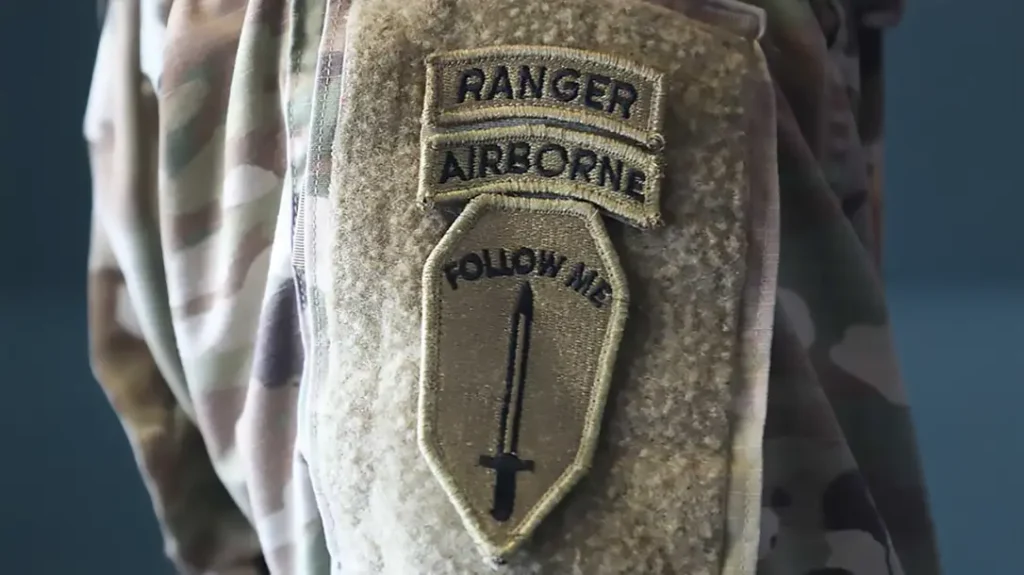
US Army Ranger School
If a student successfully leads a patrol in Florida, the student moves back to Fort Benning to prepare for graduation from US Army Ranger School. Most Ranger Class graduations occur on a Friday at Hurley Hill, overlooking Victory Pond. After watching the Rangers in Action demonstration, friends, family, and fellow Rangers assist in pinning the coveted black and gold Ranger tabs on the Army’s newest Ranger-qualified personnel.
For more information, visit the US Army Rangers.
Advertisement — Continue Reading Below
WHY OUR ARTICLES/REVIEWS DO NOT HAVE AFFILIATE LINKS
Affiliate links create a financial incentive for writers to promote certain products, which can lead to biased recommendations. This blurs the line between genuine advice and marketing, reducing trust in the content.
